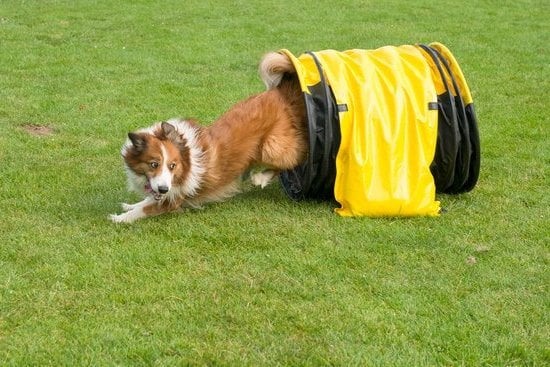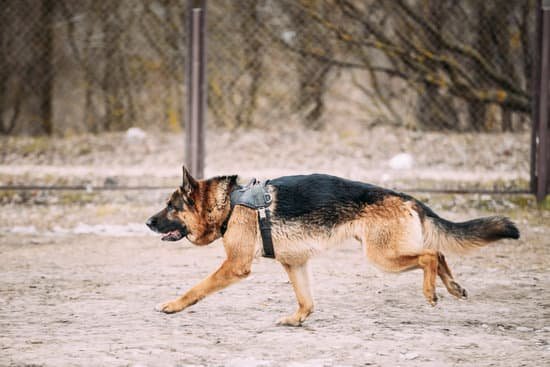Training a mostly blind and deaf dog presents a unique set of challenges that require patience, understanding, and creativity. In this article, we will explore the strategies and techniques to effectively train a special needs dog. From building trust and communication to modifying the environment, this guide will provide valuable insights for pet owners facing this particular challenge. Understanding the challenges is crucial in developing a successful training plan for these remarkable animals.
The process of training a mostly blind and deaf dog requires innovative methods that cater to their specific needs. By utilizing their remaining senses and adapting traditional commands, pet owners can create an environment that fosters learning and growth. This article will delve into the importance of sensory training, tactile signals, and positive reinforcement in the training process. Additionally, we will address the need for patience and persistence when working with these extraordinary animals.
As we navigate through each aspect of this training journey, it is important to approach it with empathy and understanding. The bond between a pet owner and their four-legged companion is strengthened by overcoming obstacles together. Ultimately, this article aims to provide guidance for individuals who are dedicated to providing the best care for their mostly blind and deaf dog.
Building Trust and Communication
Building trust and effective communication with a mostly blind and deaf dog requires patience, understanding, and specialized techniques. These dogs face unique challenges in perceiving the world around them, which can make traditional training methods ineffective. However, by utilizing certain strategies, it is possible to establish a strong bond and open lines of communication with these special needs dogs.
Use of Touch
One of the most important ways to build trust and communication with a blind and deaf dog is through touch. Dogs rely heavily on physical contact, so using tactile signals can be highly effective. This includes gentle petting, scratching behind the ears, and other forms of positive physical interaction. By learning to understand your touch as a means of communication, the dog can begin to feel secure and connected to their owner.
Establishing Routines
Creating consistent routines can also help in building trust with a blind and deaf dog. When they know what to expect at certain times of the day or during specific activities such as feeding or going for a walk, it provides them with a sense of security. This routine can also be tied into training exercises, allowing the dog to anticipate when it’s time for learning sessions.
Utilize Scent
Another way to build trust is by using scent as a form of communication. Dogs have an incredible sense of smell, and they can use this ability to recognize familiar scents. By associating your scent with positive experiences like treats and affectionate interactions, you can further strengthen the bond between you and your blind and deaf dog.
Sensory Training
Training a mostly blind and deaf dog presents unique challenges, but with the right techniques, it is possible to create a successful training plan. One of the most important aspects of training a dog with sensory impairments is understanding and utilizing the dog’s remaining senses. While the loss of sight and hearing can make traditional training methods more difficult, dogs rely heavily on their sense of smell, touch, and spatial awareness.
When working with a blind and deaf dog, it is crucial to focus on training techniques that tap into these remaining senses. For example, using scented markers or treats can help guide the dog during training exercises. Additionally, incorporating tactile signals such as gentle touch cues or vibrations can help establish communication and convey commands effectively.
In order to create a successful training plan for a mostly blind and deaf dog, it is essential to be patient and observant. Understanding how the dog responds to different stimuli and adjusting training methods accordingly is key. By customizing the approach to accommodate the dog’s sensory abilities, it is possible to build trust and communication, ultimately leading to a well-trained and confident pet.
| Sensory Training Techniques | Benefits |
|---|---|
| Using scented markers or treats | Guides the dog during training exercises |
| Tactile signals (gentle touch cues or vibrations) | Establishes effective communication and conveys commands |
| Patient observation of the dog’s responses | Allows for customization of training approach based on individual sensory abilities |
Customizing Commands
Adapting traditional training commands and cues to accommodate a blind and deaf dog requires creativity, patience, and a deep understanding of the dog’s unique needs. Since the dog is unable to rely on visual or auditory cues, it’s essential to modify commands to utilize the dog’s remaining senses, such as touch and smell. One effective way to do this is by incorporating tactile signals into the training routine.
Tactile signals involve using touch or physical signals to communicate with the dog. For example, instead of using verbal commands, you can gently tap the dog’s shoulder or back to get their attention. This tactile cue can be paired with a specific gesture or hand signal to indicate the desired behavior. Over time, the dog will learn to associate these tactile signals with particular actions or commands.
In addition to tactile signals, utilizing scent cues can also be beneficial when customizing commands for a blind and deaf dog. Dogs have an incredibly keen sense of smell, so incorporating scents associated with different commands can help them understand what is expected of them.
For example, you can use a particular essential oil or scent marker in conjunction with a command or cue. By repeating this association over time, the dog will learn to recognize and respond to the scent as if it were a traditional verbal command.
| Training Technique | Description |
|---|---|
| Tactile Signals | Using touch or physical signals in place of verbal cues |
| Scent Cues | Incorporating specific scents associated with different commands |
Positive Reinforcement
Training a mostly blind and deaf dog requires a unique approach that focuses on positive reinforcement to effectively communicate and build trust with the dog. Positive reinforcement involves rewarding the dog for good behavior, which encourages them to repeat the behavior in the future. This training technique is especially important when working with special needs dogs as it creates a supportive and encouraging environment for learning.
Here are some key points to consider when using positive reinforcement to train a mostly blind and deaf dog:
- Consistency is key: Establish a consistent routine and use the same rewards each time to reinforce positive behavior. This helps the dog understand what is expected of them and allows them to make associations between their actions and the reward they receive.
- Use high-value treats: Since your dog’s senses are limited, it’s important to use high-value treats that they can easily smell, taste, and enjoy. These treats should be used as rewards for following commands or exhibiting good behavior during training sessions.
- Incorporate touch and praise: In addition to using treats, it’s essential to provide physical touch and verbal praise as forms of positive reinforcement. A gentle pat, a belly rub, or enthusiastic verbal praise can go a long way in communicating your approval to your dog.
By focusing on positive reinforcement techniques, you can create an environment where your mostly blind and deaf dog feels supported, motivated, and eager to learn. This approach not only enhances their training experience but also strengthens the bond between you and your furry companion. Remember that patience and consistency are crucial when implementing positive reinforcement strategies with special needs dogs.
Tactile Signals
Training a mostly blind and deaf dog requires alternative methods of communication and guidance due to the limited sensory perception of the dog. Tactile signals, which rely on touch and physical signals, are essential in helping the dog navigate its surroundings and understand commands. Here are some effective training methods that utilize tactile signals to guide a mostly blind and deaf dog:
- Hand Signals: Since verbal commands are ineffective with a deaf dog, using hand signals can be a useful way to communicate. Establishing clear, consistent hand signals for basic commands like sit, stay, and come can help the dog understand what is expected of them.
- Touch Cues: Incorporating touch cues into training can provide physical prompts for the dog to follow. For example, gently tapping the dog’s side or shoulder can signal them to move in a certain direction or perform a specific action. Associating these touch cues with specific behaviors through repetition can help reinforce their understanding.
- Using Vibration: Another tactile method to communicate with a blind and deaf dog is through vibration. For instance, stomping on the ground or using a vibrating collar can serve as a signal for the dog to pay attention or respond to a command. The sensation of vibration can capture the dog’s attention and prompt them to react accordingly.
Implementing these tactile training methods requires patience, consistency, and positive reinforcement. It is important to understand that each dog may respond differently, so observing their reactions and adjusting the training techniques accordingly is crucial for success. By incorporating tactile signals into training, it is possible to effectively guide a mostly blind and deaf dog in learning new behaviors and navigating their environment.
Environment Modification
Creating Clear Pathways
One important aspect of modifying the home environment for a blind and deaf dog is to create clear pathways for them to navigate. This can be achieved by removing obstacles, such as furniture or clutter, that could potentially cause the dog to trip or bump into. It’s also helpful to establish consistent routes throughout the house, so the dog can become familiar with their surroundings.
Use of Textured Surfaces
Introducing textured surfaces can also aid in helping a mostly blind and deaf dog navigate their environment. Placing rugs or mats with different textures in areas where the dog spends most of its time can provide tactile cues for the dog about different spaces within the home. For example, using a rough-textured rug near their bed area and a smooth-surfaced rug near their feeding area can help the dog differentiate between the two places.
Creating Safe Zones
Another way to modify the home environment is by creating safe zones where the dog feels comfortable and secure. This can be achieved by using baby gates or barriers to confine certain areas within the house that may pose potential hazards for the dog. By creating designated safe zones, the dog can have an easier time navigating and learning within these defined spaces.
By making these modifications to your home environment, you can significantly assist a mostly blind and deaf dog in navigating their surroundings and learning new behaviors. It’s important to continually assess and make adjustments based on your dog’s unique needs as they become more comfortable with their modified environment.
Patience and Persistence
In conclusion, training a mostly blind and deaf dog may present unique challenges, but with patience and persistence, it is possible to build a strong bond and successful communication with these special needs animals. By understanding the challenges and utilizing techniques such as tactile signals, sensory training, and environment modification, dog owners can create a customized training plan that caters to their pet’s specific needs.
It is essential to adapt traditional commands and cues to accommodate a blind and deaf dog while emphasizing the importance of positive reinforcement.
Building trust and effective communication with a blind and deaf dog requires time, dedication, and a deep understanding of their remaining senses. By consistently using tactile signals and providing a safe and modified home environment for the dog to navigate, owners can help their pet feel secure in its surroundings. Patience and persistence are key in this process, as progress may be slow at times, but can ultimately lead to significant improvements in the dog’s behavior and abilities.
Frequently Asked Questions
Can a Deaf and Blind Dog Be Trained?
Yes, a deaf and blind dog can be trained using alternative methods that rely on their other senses. Training involves using tactile cues, scent-based commands, and hand signals to communicate with the dog. By utilizing touch, smell, and visual signals like gentle taps or vibrations, it is possible to effectively train a deaf and blind dog.
How Do You Deal With a Blind and Deaf Dog?
Dealing with a blind and deaf dog requires patience, understanding, and adaptation. Communication methods need to be adjusted to accommodate the dog’s disabilities, such as using scent markers to designate different areas in the home or incorporating touch cues for basic commands.
Creating a safe and consistent environment is also crucial for the well-being of a blind and deaf dog.
Can a Blind and Deaf Dog Survive?
With proper care and support, a blind and deaf dog can indeed survive and thrive. Though they may face challenges related to mobility, communication, and safety, dogs are resilient animals that can adapt to their circumstances.
Providing them with a loving home environment where their needs are carefully attended to is essential for ensuring their survival and quality of life. It’s crucial for owners to seek guidance from veterinarians or animal behaviorists who specialize in caring for special needs dogs to help the animal live its best life despite its disabilities.

Welcome to the blog! I am a professional dog trainer and have been working with dogs for many years. In this blog, I will be discussing various topics related to dog training, including tips, tricks, and advice. I hope you find this information helpful and informative. Thanks for reading!





